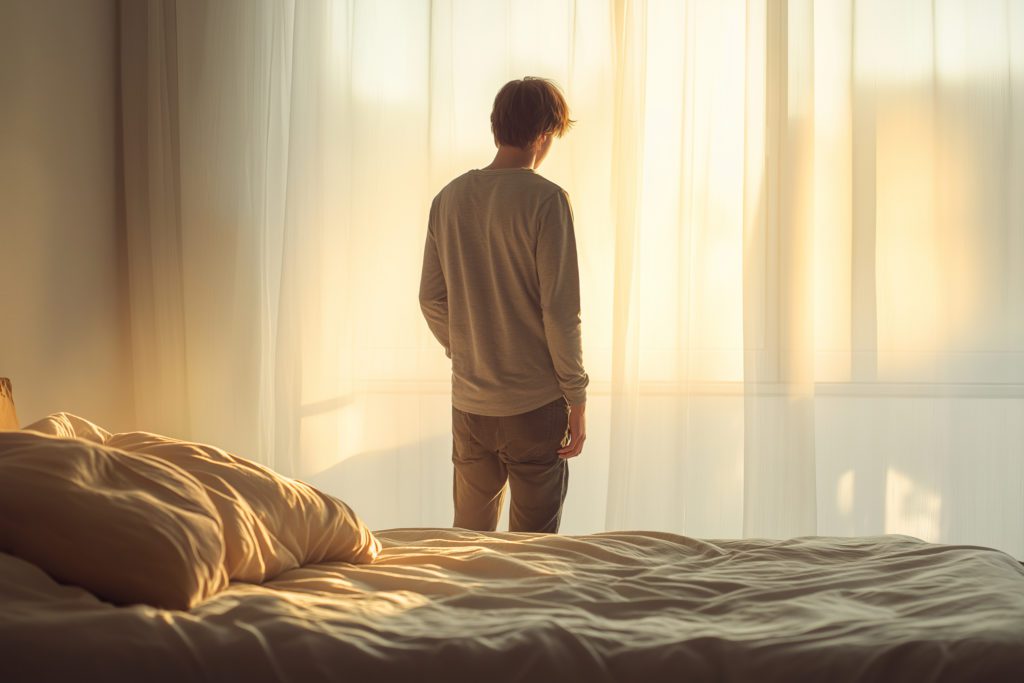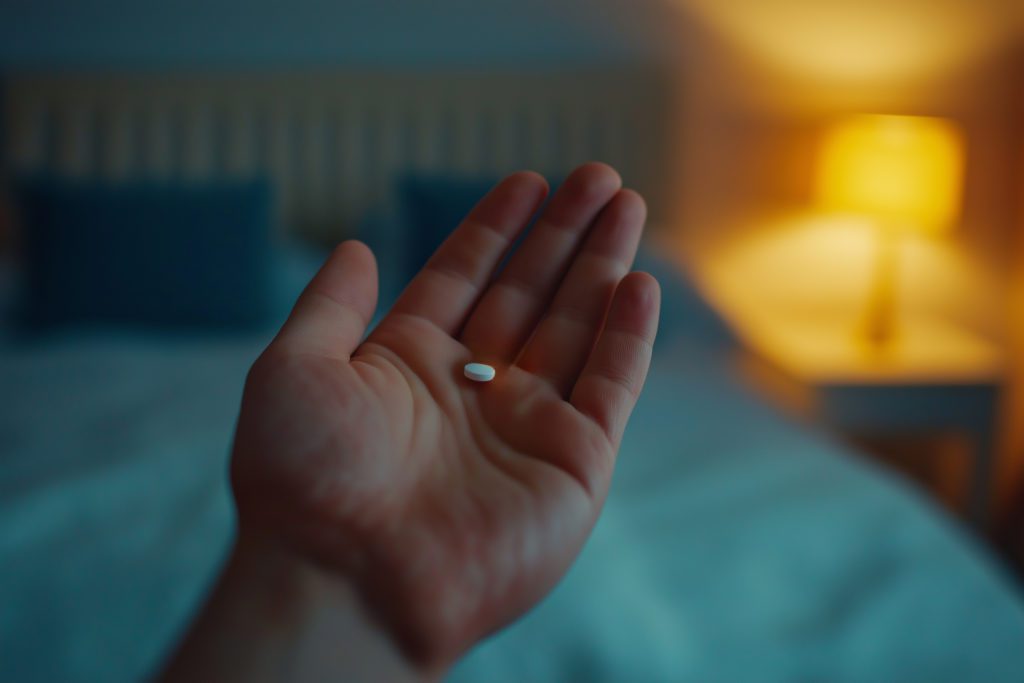
Understanding Narcolepsy: Causes, Symptoms, and Diagnosis
Let’s take a closer look at this complex sleep disorder which interrupts people’s ability to choose when they sleep

Narcolepsy is a chronic brain disorder that affects your ability to control your sleep-wake cycles. Perhaps the best-known symptom of narcolepsy is falling asleep, without warning, at any point during the day, when you’re least expecting it—this is sometimes known as a “sleep attack”. This can occur during everyday activities such as talking, driving, or eating.
Naturally, falling asleep unexpectedly can lead to significant problems (and dangers) in daily life, but this isn’t the only narcolepsy symptom—it also causes other less commonly discussed issues like sleep paralysis and excessive dreaming.
If you or someone you love is affected by narcolepsy, it’s crucial to understand this sleep disorder for improving sleep hygiene and overall wellness. In this article, we’ll take a closer look at narcolepsy, shedding light on its causes, symptoms, and diagnostic process.
What is Narcolepsy?
Narcolepsy is a neurological disorder that significantly impacts the body’s natural sleep pattern. Narcoleptics experience overwhelming daytime drowsiness and sudden, unexpected bouts of sleep, among other symptoms.
The sleep disorder is commonly classified into two types:
- Type 1 (about 20% of narcoleptics): Narcolepsy with cataplexy (a sudden, brief loss of muscle tone that’s often triggered by strong emotions such as laughter, fear, anger, stress, or excitement)
- Type 2 (about 80% or narcoleptics): Narcolepsy without cataplexy
Some quick facts about narcolepsy:
- Narcolepsy affects around 1 in every 2,000 people in the US
- Symptoms typically begin to occur between the ages of 10 and 30
- People who have narcolepsy enter into rapid eye movement (REM) sleep within around 15 minutes, compared to around 60-90 minutes for non-narcoleptics.
What Causes Narcolepsy?
The causes of narcolepsy are not fully understood, but science has made progress in identifying some of the key factors.
- Autoimmune disorders: Type 1 narcolepsy is often caused by a loss of brain cells that produce hypocretin, a neuropeptide (or chemical messenger) which plays a key role in controlling wakefulness and REM sleep. Researchers believe the body’s immune system attacks the hypocretin-containing brain cells.
- Genetics: Certain gene variations are linked to an increased risk of developing narcolepsy.
- Brain injury: Traumatic injury to the brain, and tumors, can cause the part of the brain that regulates wakefulness and REM sleep to malfunction.
- Immune system: Scientists have discovered that narcoleptics have unusual immune system activity, with strep throat and some influenza possibly triggers in some individuals.
Narcolepsy Symptoms
Symptoms of narcolepsy can vary widely, but will typically include:
- Excessive daytime sleepiness (EDS): Extreme drowsiness and an overwhelming urge to sleep, regardless of the amount of sleep the narcoleptic had during the night.
- Sleep attacks: Falling asleep suddenly and unexpectedly
- Cataplexy: Temporary loss of muscle control or weakness triggered by emotions like laughter and anger
- Sleep paralysis: A temporary inability to move or speak while falling asleep or waking up
- Hallucinations: Vivid and often frightening dreams while falling asleep or waking up
- Disrupted nighttime sleep: Frequent awakenings during the night.
Narcolepsy Diagnosis
It’s estimated that just only 1 in 4 people with narcolepsy have been diagnosed and are receiving treatment. Early diagnosis and intervention can significantly improve quality of life for those living with narcolepsy. When you present to your physician, they’ll carry out a series of specialized tests to rule out other conditions that may be causing your symptoms, such as restless legs syndrome or sleep apnea.
Participants will often stay the night at a sleep center in order for specialists to carry out diagnostic tests, which may include:
- Checking your sleep levels: Practitioners will track your sleep-wake cycles to check you’re getting enough sleep, usually using a watch-like device.
- Sleep study (polysomnogram): EEG sensors placed on your scalp are used to track your brain waves. Physicians can use the information to determine what stage of sleep you’re in from one moment to the next, and gather data related to your heart rate, breathing, leg movements and eye movements.
- Multiple sleep latency test (MSLT): This test determines whether you’re prone to falling asleep during the day time. You’ll be asked to take naps during the day time and specialists will observe your sleep patterns.
- Maintenance of wakefulness test (MWT): This test determines whether you’re able to stay awake in quiet, dark situations where it would be easy to fall asleep.
- Spinal tap (lumbar puncture): A test to determine the levels of hypocretin (the neuropeptide mentioned earlier) in your spinal fluid.
Impact of Narcolepsy on Everyday Life
Narcolepsy can significantly impact daily functioning, affecting work, social interactions, and overall quality of life. Some challenges include:
- Safety concerns: Sleep attacks and cataplexy in particular can pose risks during activities like driving, looking after children, or operating heavy machinery.
- Social and emotional effects: Narcolepsy symptoms can be unpredictable and unsettling, leading to anxiety, depression, and social isolation.
- Performance issues: Excessive daytime sleepiness can impair cognitive functions, affecting academic and work performance.
Managing Narcolepsy: Medication and Lifestyle Changes
Living with narcolepsy can be challenging, but there are a number of things that can help to manage symptoms. Your physician may prescribe stimulants to combat excessive daytime sleepiness, while cataplexy can be treated using antidepressants.
Lifestyle adjustments such as the following can also play a crucial role:
- Take scheduled naps: Napping when you feel extra sleepy can help you manage EDS
- Sleep hygiene: Creating a regular sleep schedule, optimizing your sleep environment, and minimizing distractions before bedtime can improve your quality of sleep.
- Reducing caffeine and alcohol: Avoiding your intake of these substances, in particular before bed, can help prevent sleep disturbances.
- Exercise regularly: Physical activity can improve nighttime sleep quality and reduce sleepiness during the day.

Written by
Georgia Austin
Professionally trained copywriter, editor, and content marketing strategist with over 7 years of experience—working with brands like Nike, Siemens, Toshiba, Tommy Hilfiger, Culture Trip, and Klook.
Download Pillow
Get help
Press & News
Legal
Connect
X (Twitter)
Company
Copyright © Neybox Digital Ltd.



